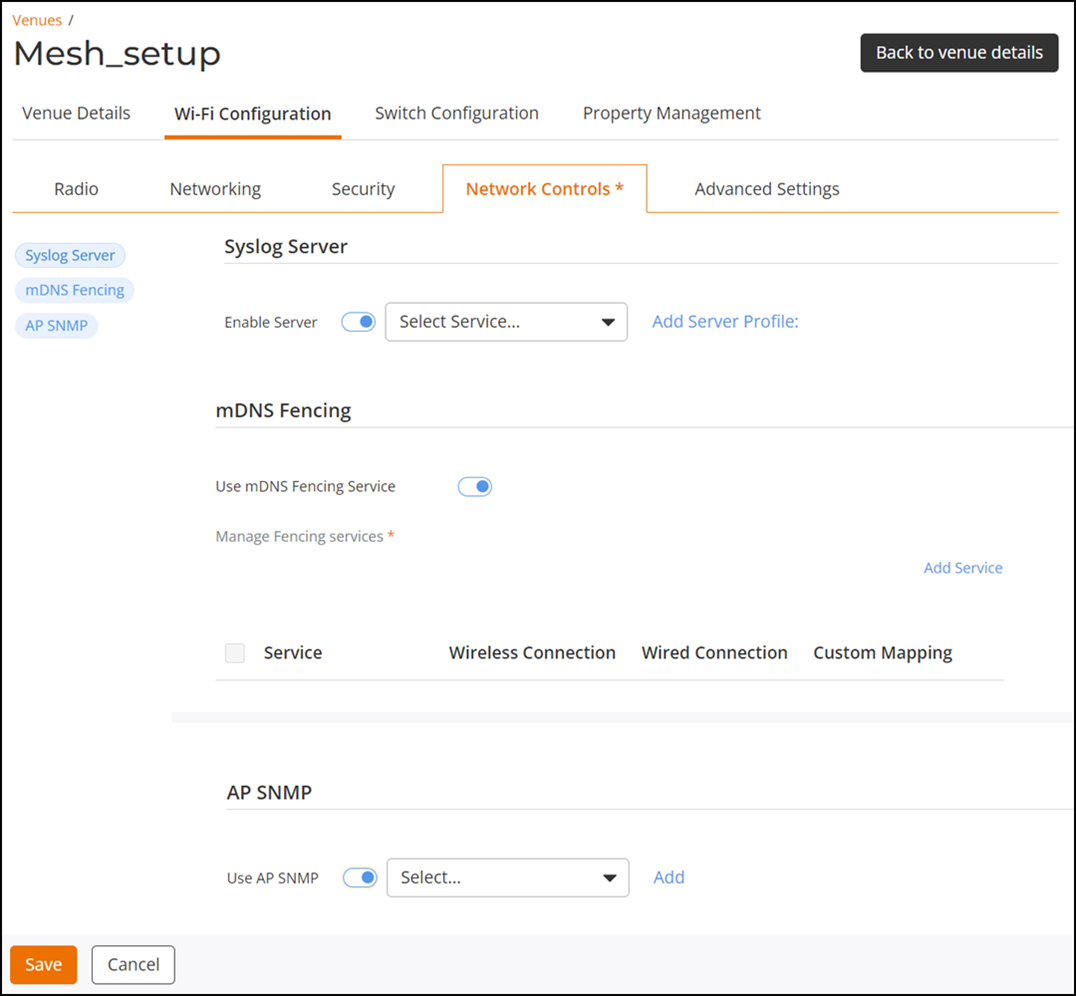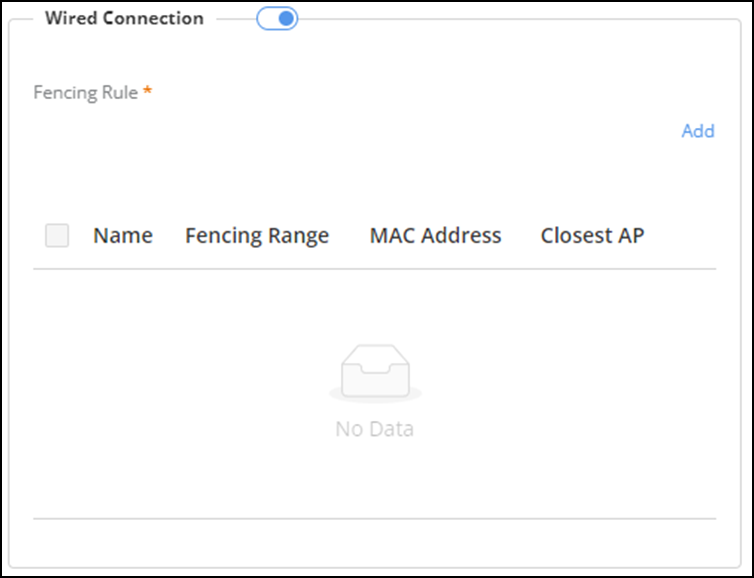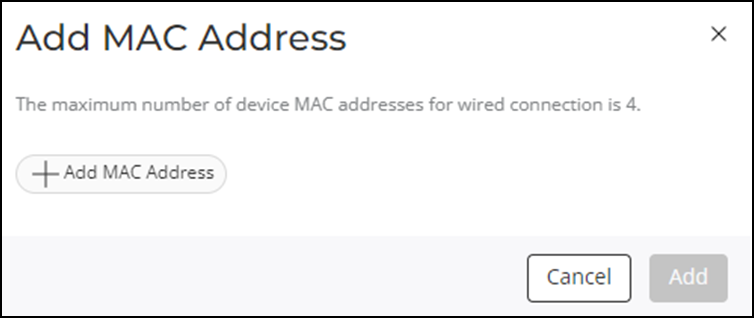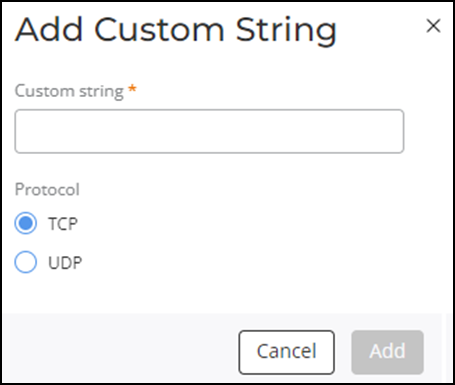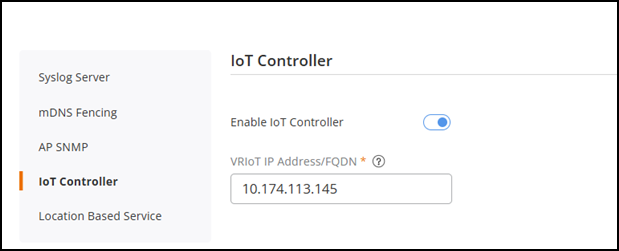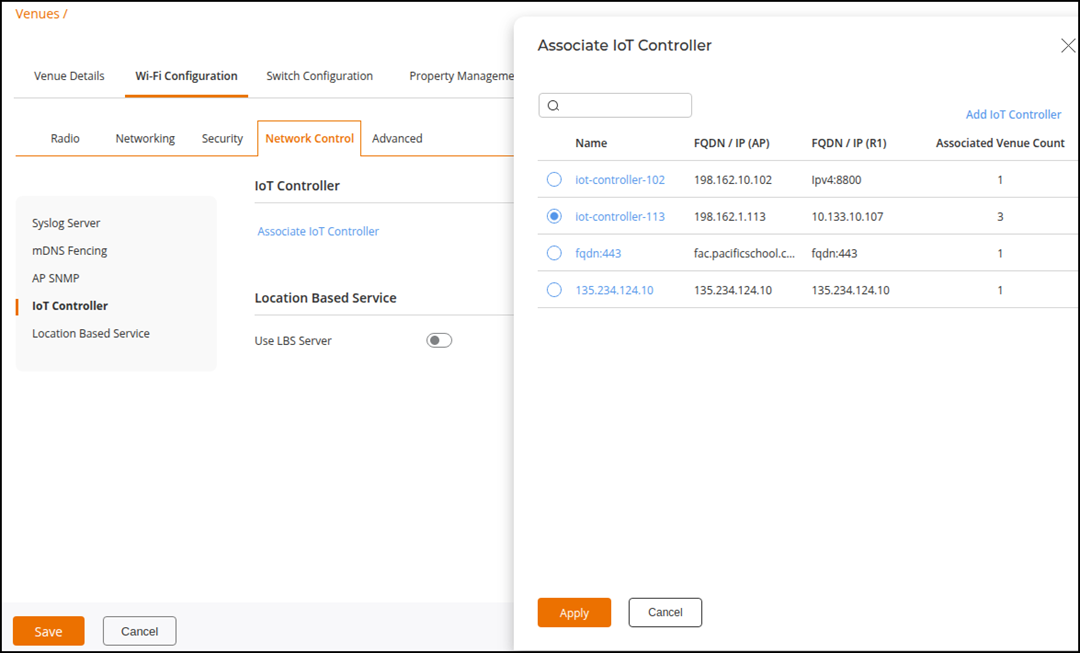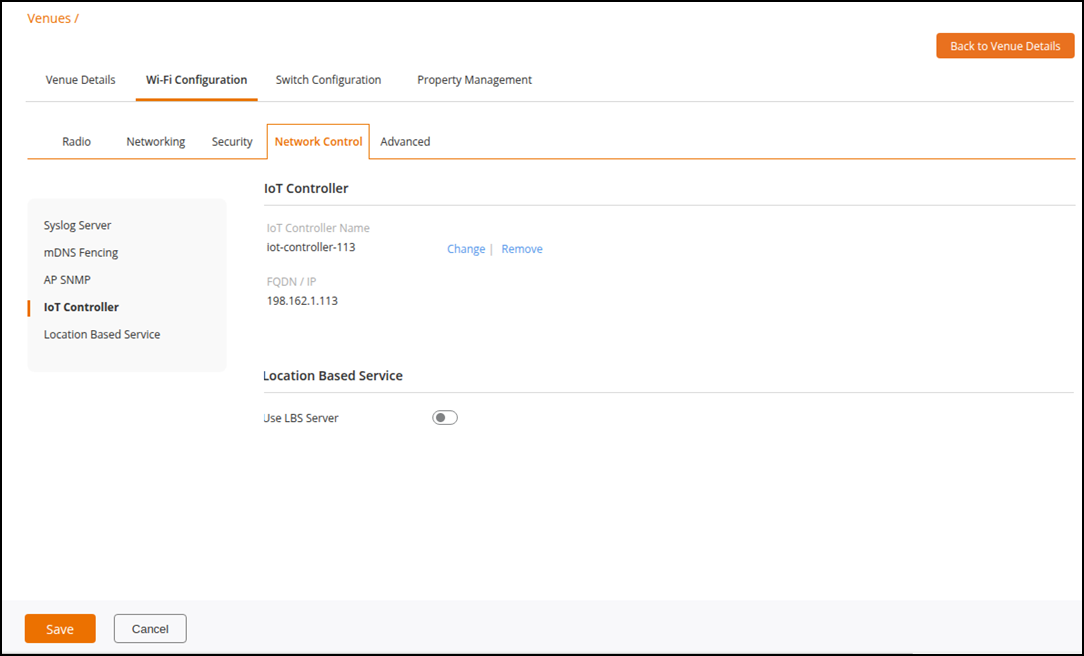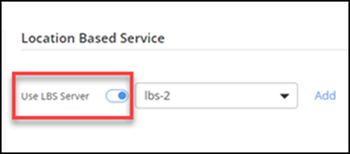Network Control Settings
In the Wi-Fi Configuration page, you can configure the Network Control services such as Syslog Server, mDNS Fencing, AP SNMP, IoT Controller, and Location Based Service that you want to provide in a venue.
Configuring a Syslog Server Policy
- To customize the Syslog Server, you must first toggle the Enable Server switch to enable the server. By default, Syslog Server is disabled.
- Select a Syslog Server profile from the drop-down list or click Add Server Profile to add a new Syslog Server profile. Refer to Creating a Syslog Server Policy to create a profile.
Configuring an mDNS Fencing Profile
Configuring an SNMP Agent Profile
- Toggle the Use AP SNMP switch to enable AP SNMP. By default, Use AP SNMP is disabled.
- Select an SNMP Agent profile from the drop-down list or click Add to add an SNMP Agent profile. Refer to Creating an SNMP Agent Profile to create an SNMP profile.
Configuring an IoT Controller
This task allows you to associate an IoT controller with the venue.
